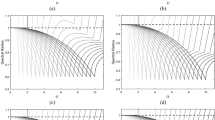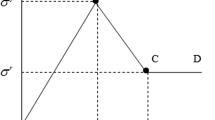Abstract
This work presents alternative time-marching schemes for performing elastodynamic analysis by the Boundary Element Method. The use of the static fundamental solution and the maintenance of the domain integral associated to the accelerations characterize the formulation employed in this work. It is called D-BEM, D meaning domain. Time response is obtained by employing step-by-step time-marching procedures similar to those adopted in the Finite Element Method. Among all integration procedures, Houbolt scheme became the most popular used to march in time with D-BEM formulation, in spite of the presence of a high numerical damping. In order to improve the integration, this work presents alternative schemes that can be used to perform elastodynamic analysis by the BEM with a better damping control. In order to verify the accuracy of the proposed scheme, three examples are presented and discussed at the end of this work.
Similar content being viewed by others
Author information
Authors and Affiliations
Corresponding author
Rights and permissions
About this article
Cite this article
Carrer, J., Mansur, W. Alternative time-marching schemes for elastodynamic analysis with the domain boundary element method formulation. Computational Mechanics 34, 387–399 (2004). https://doi.org/10.1007/s00466-004-0582-0
Received:
Accepted:
Published:
Issue Date:
DOI: https://doi.org/10.1007/s00466-004-0582-0




